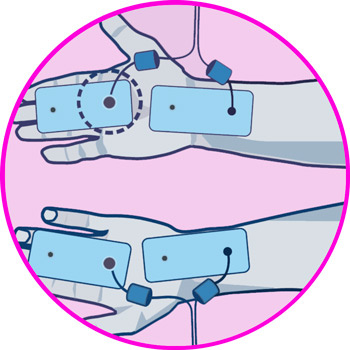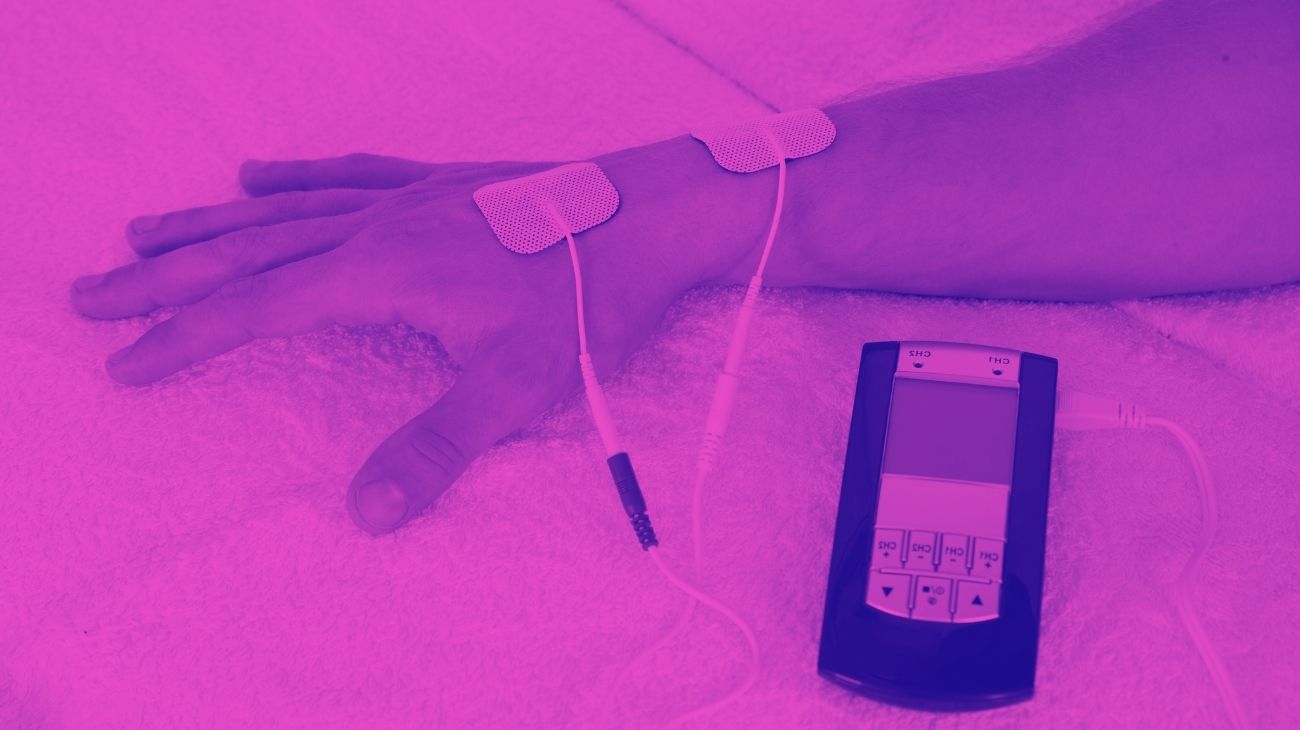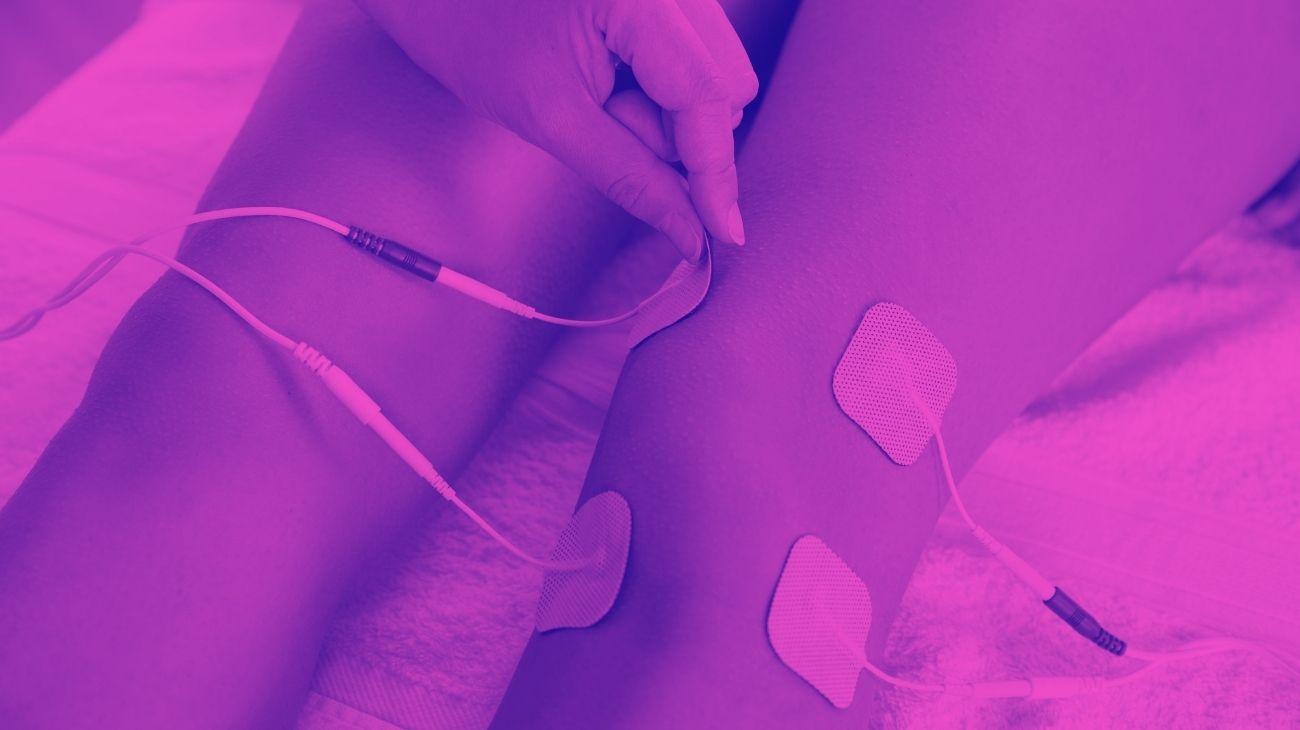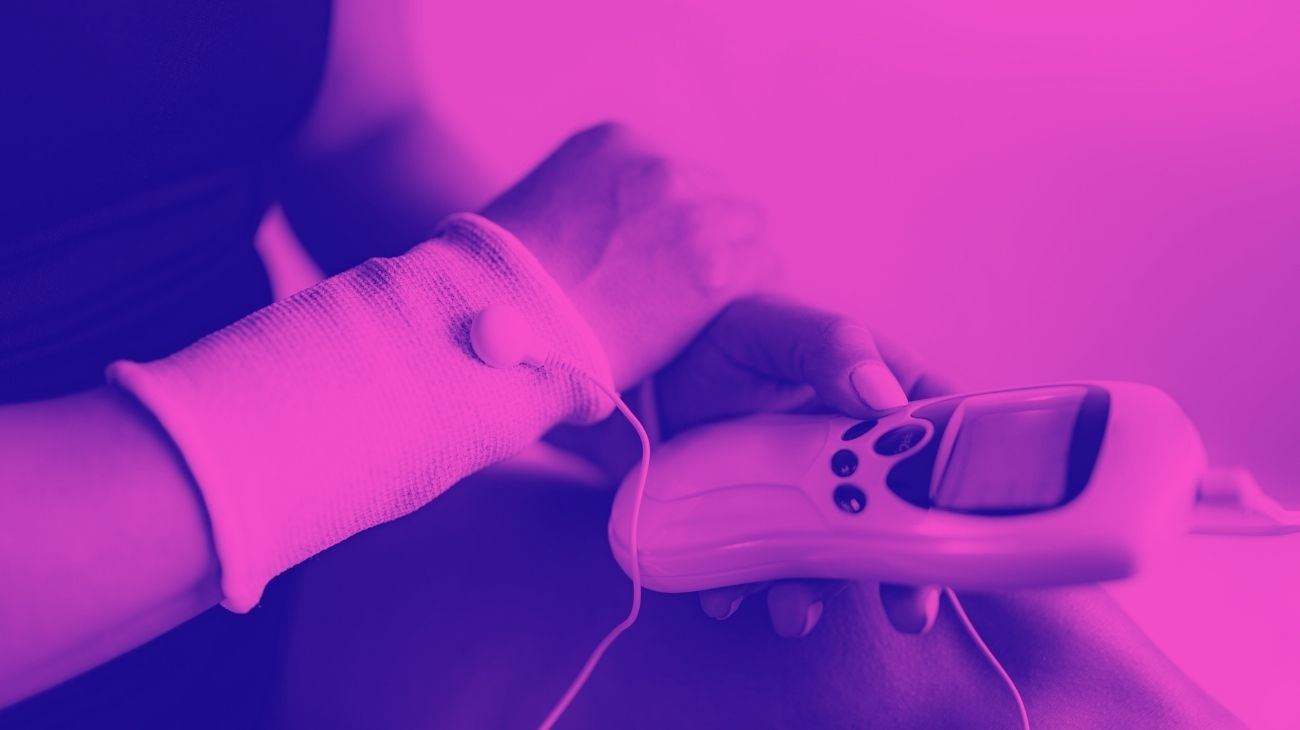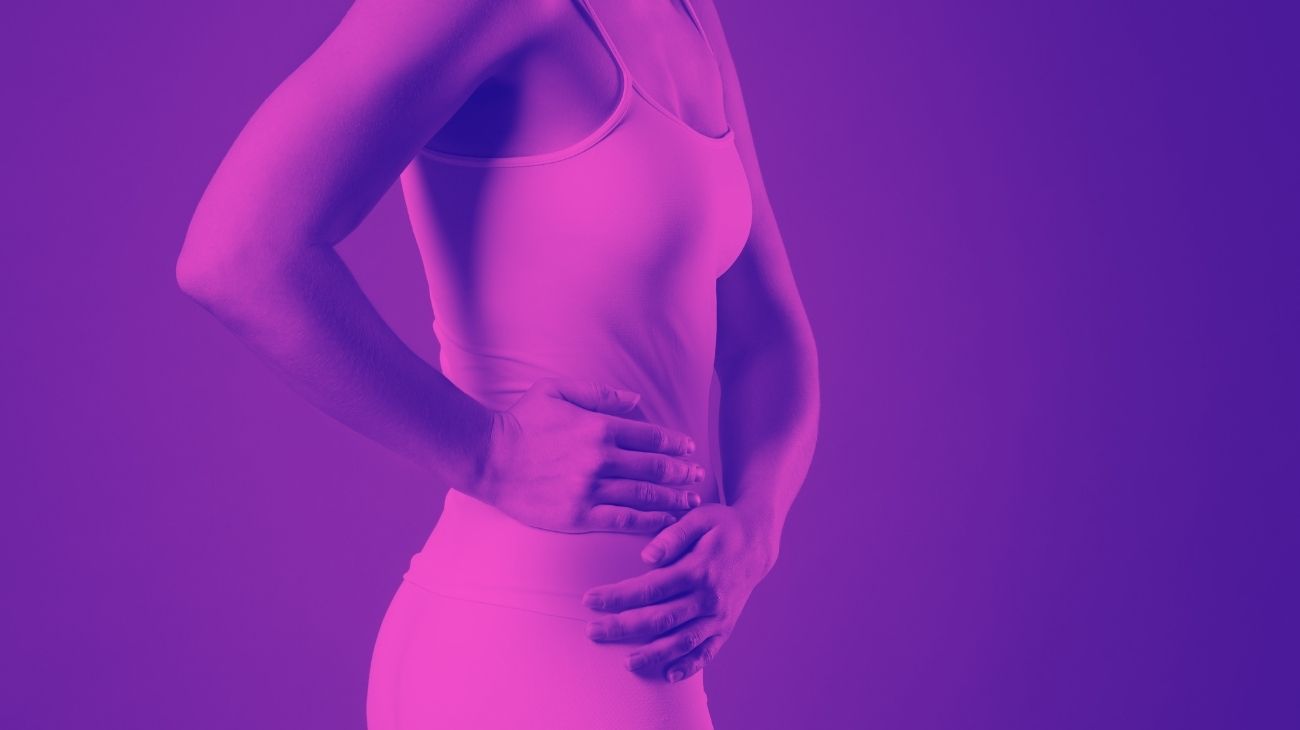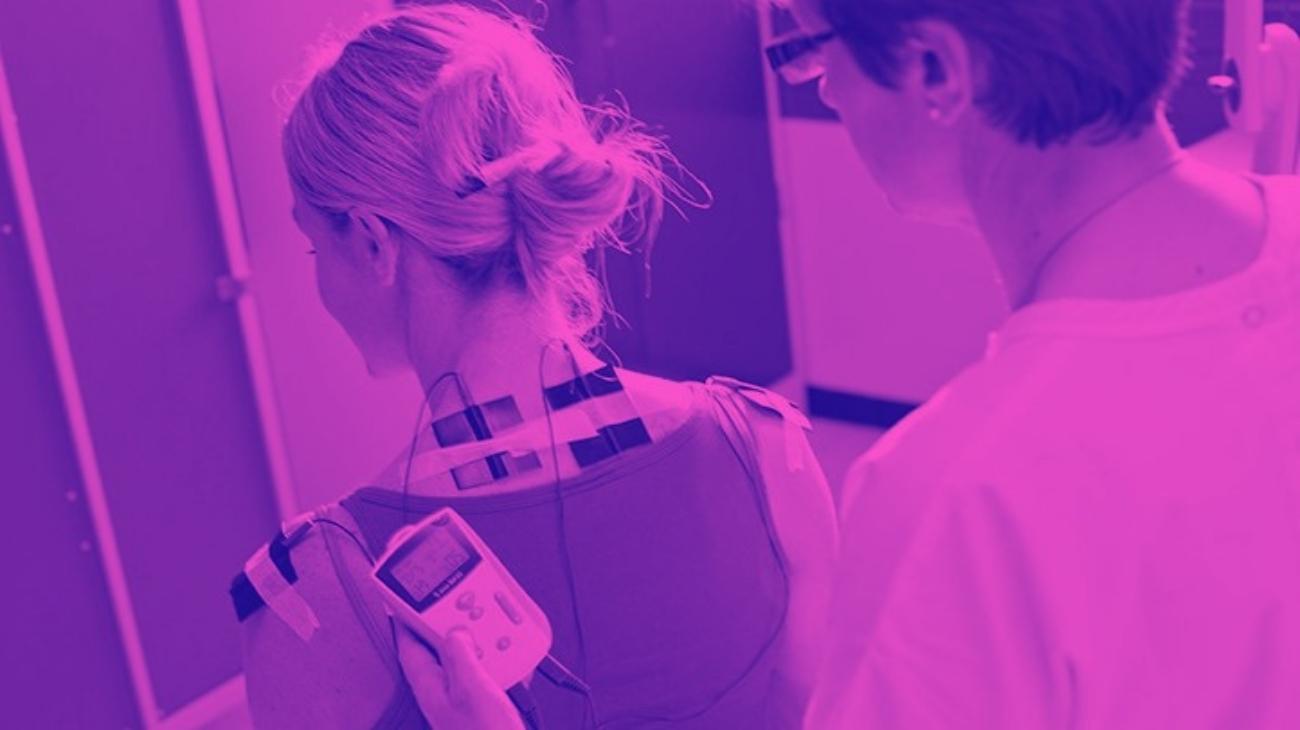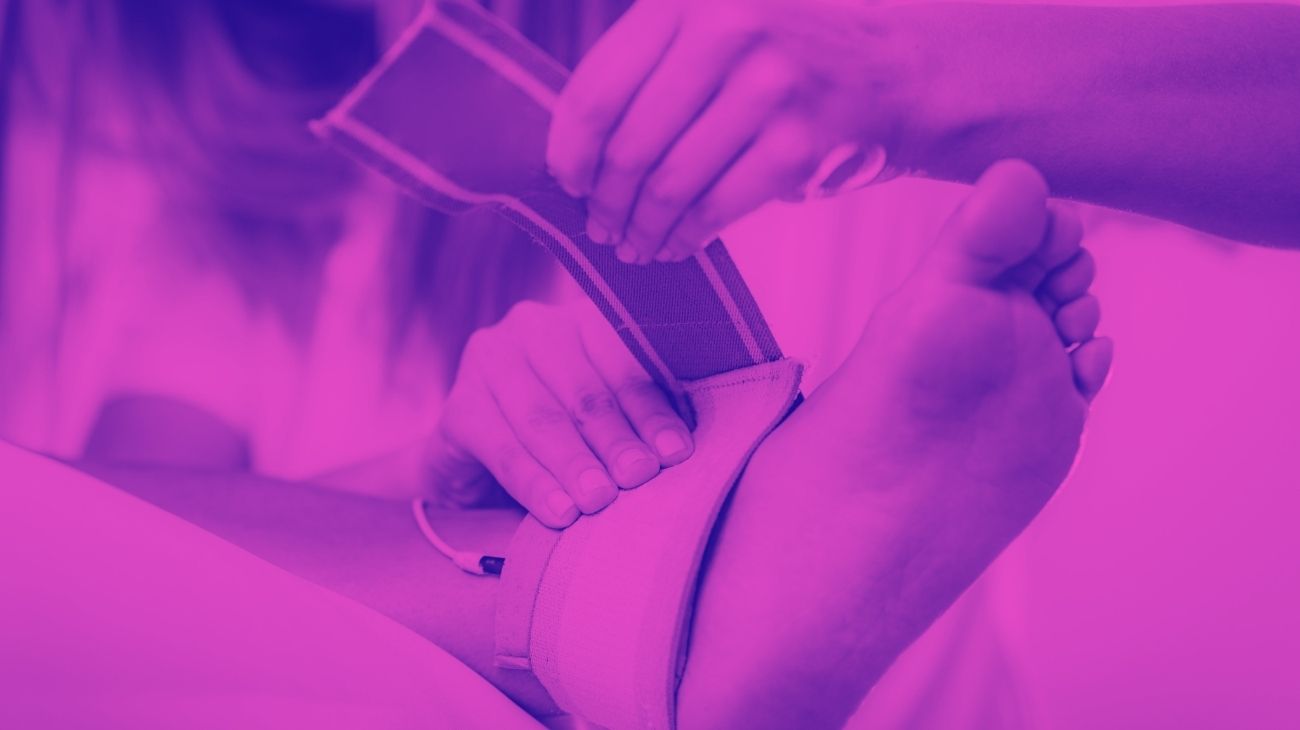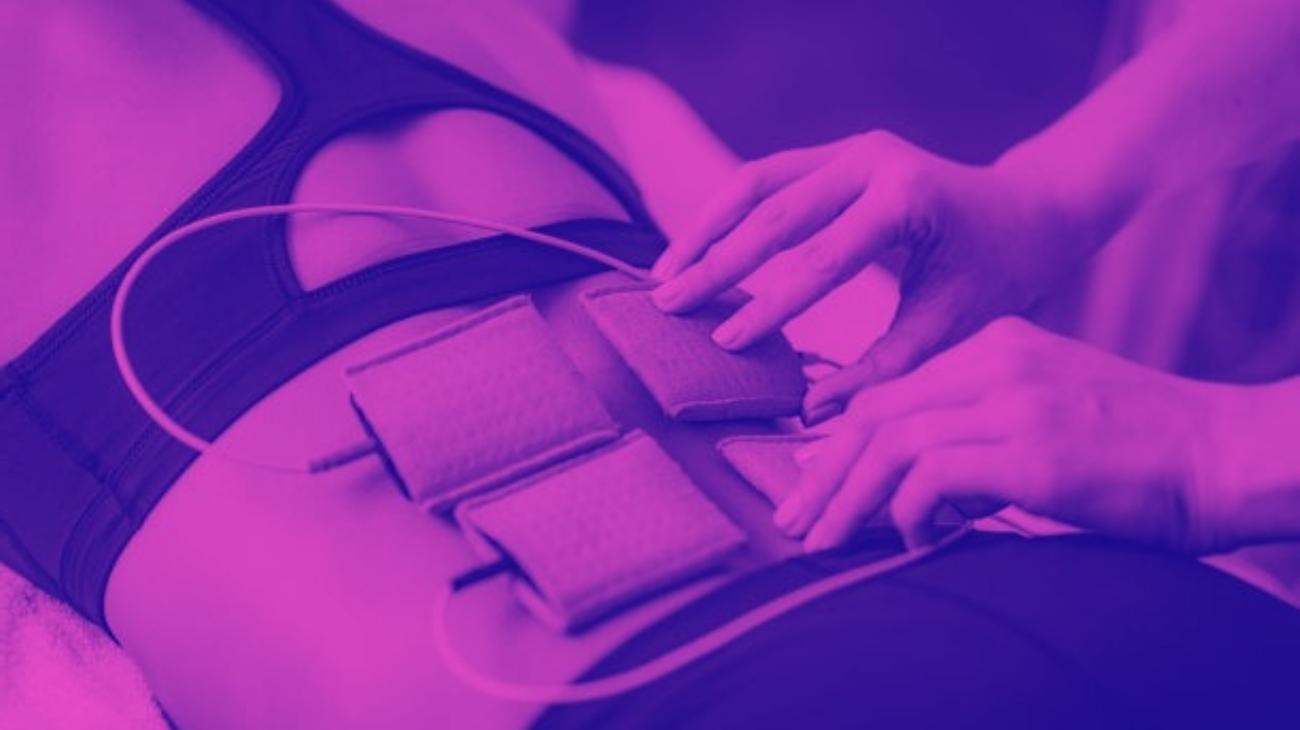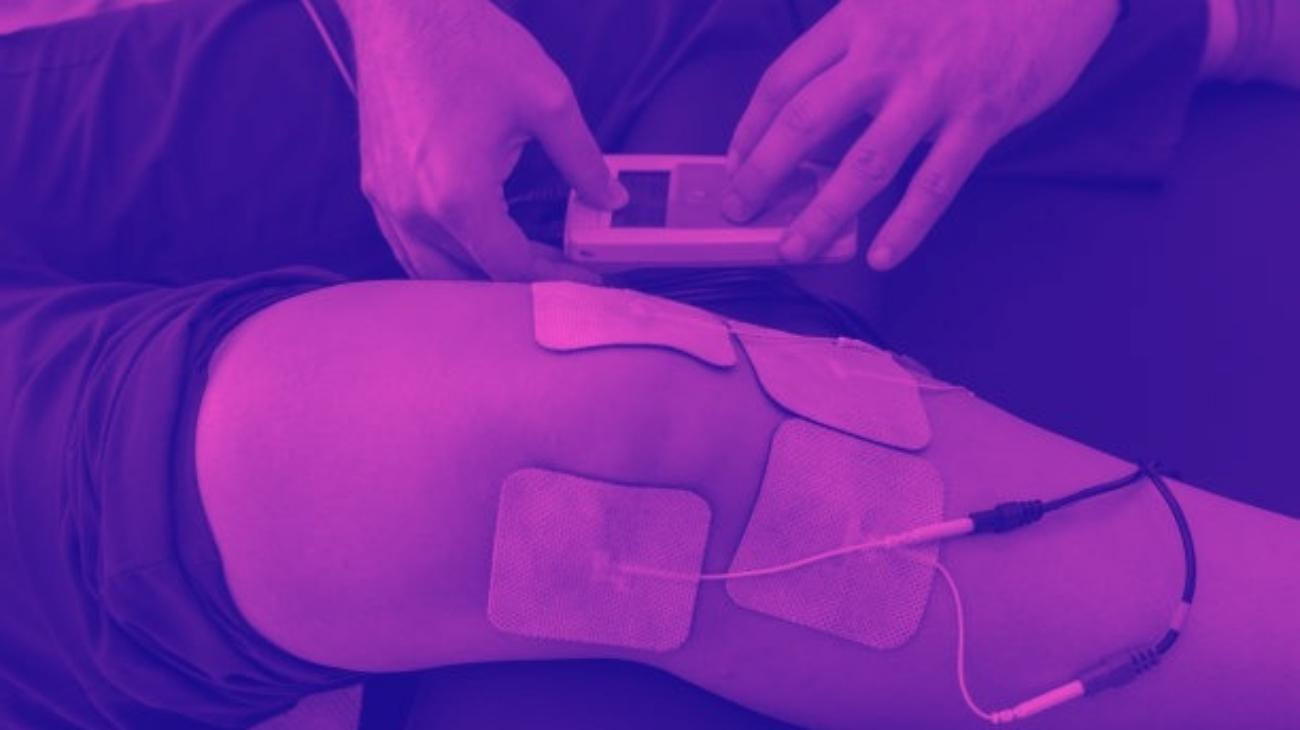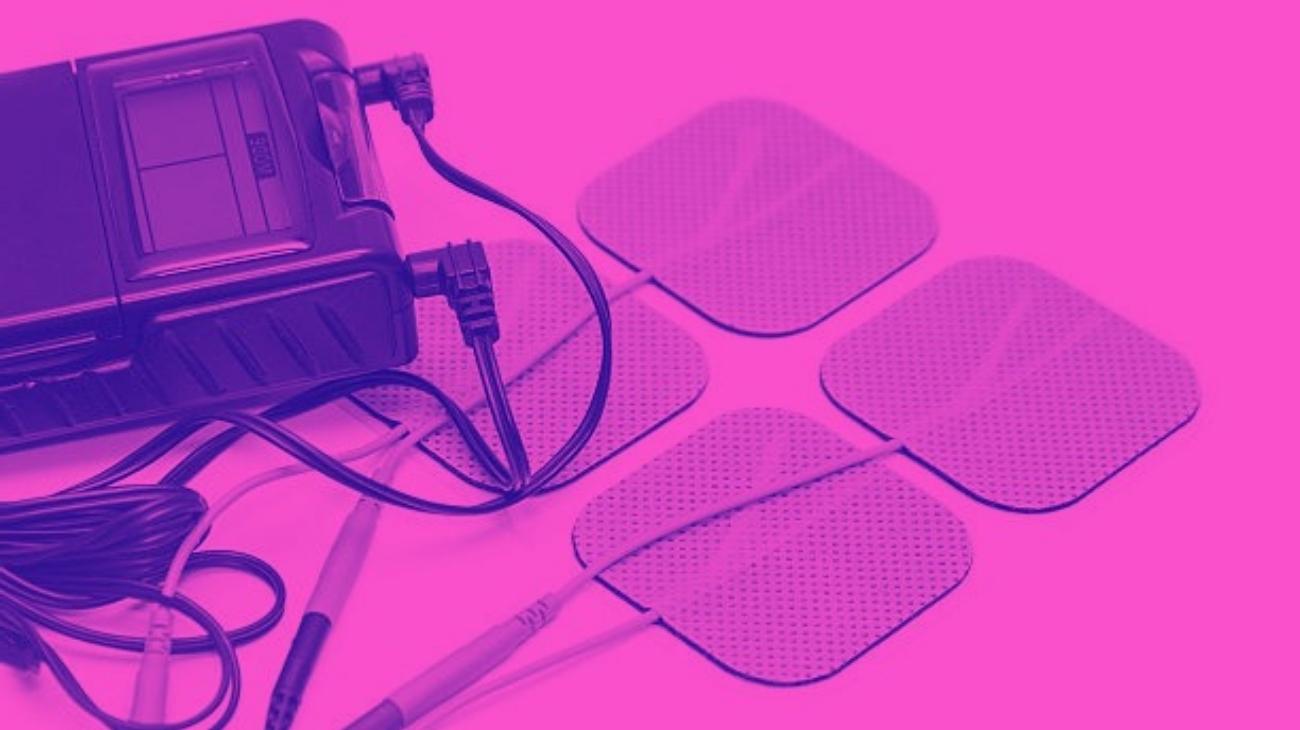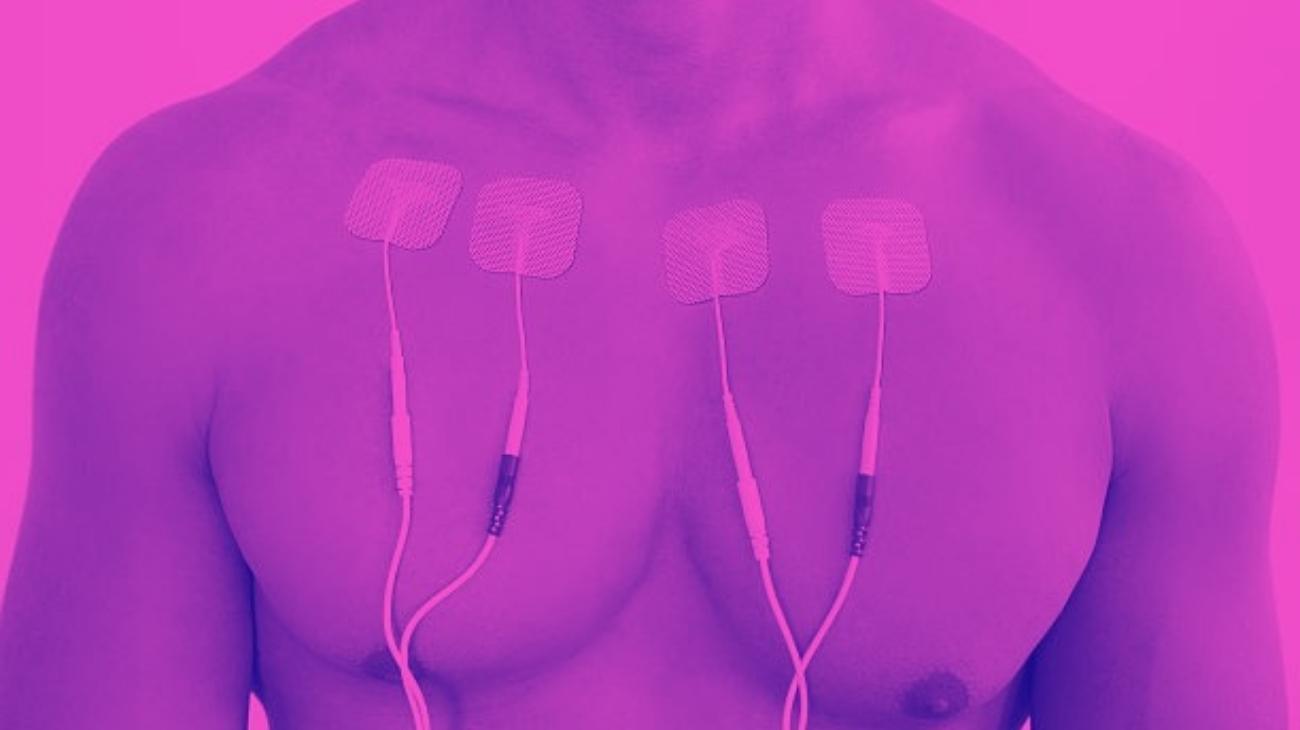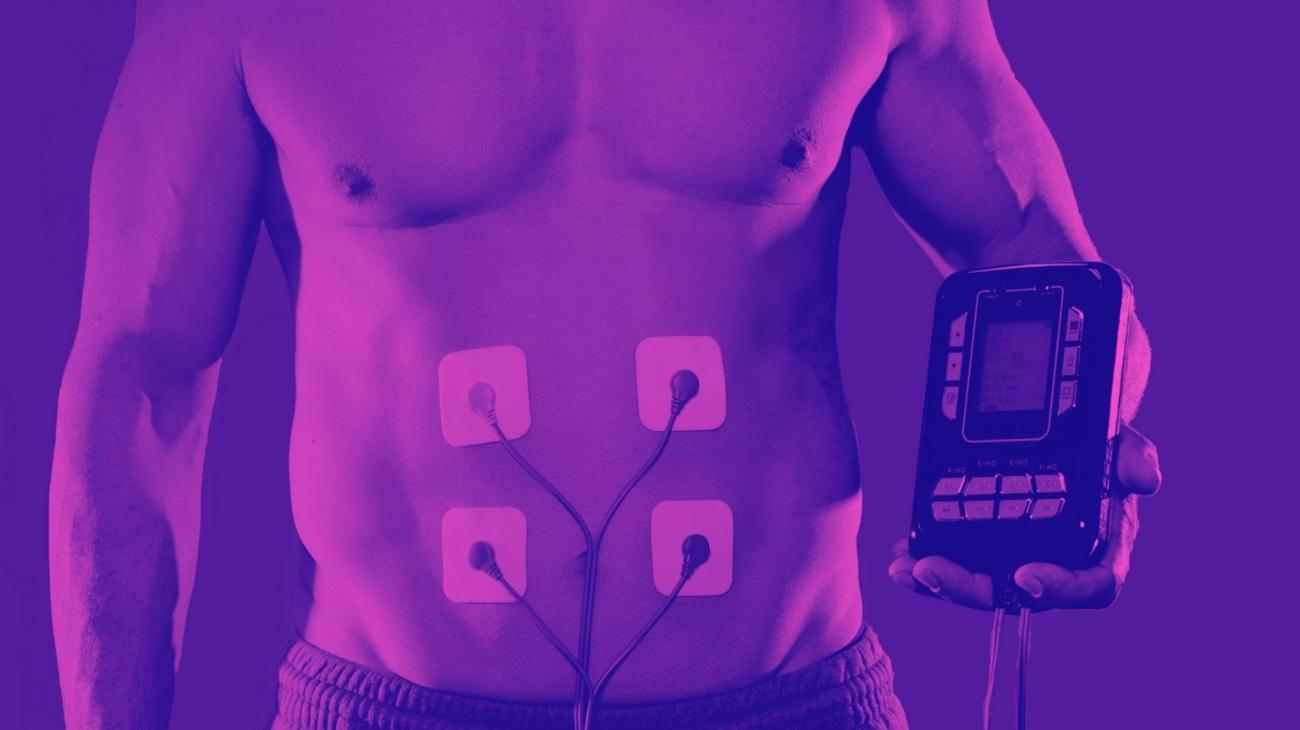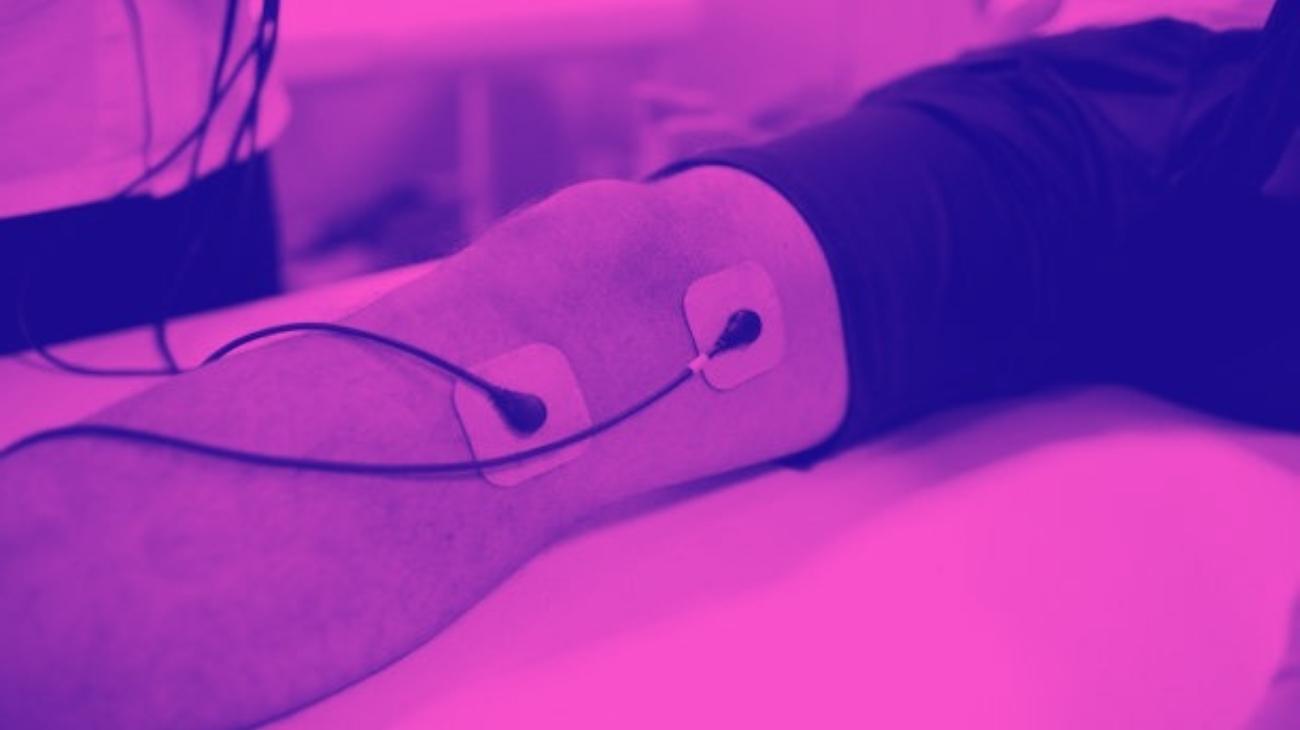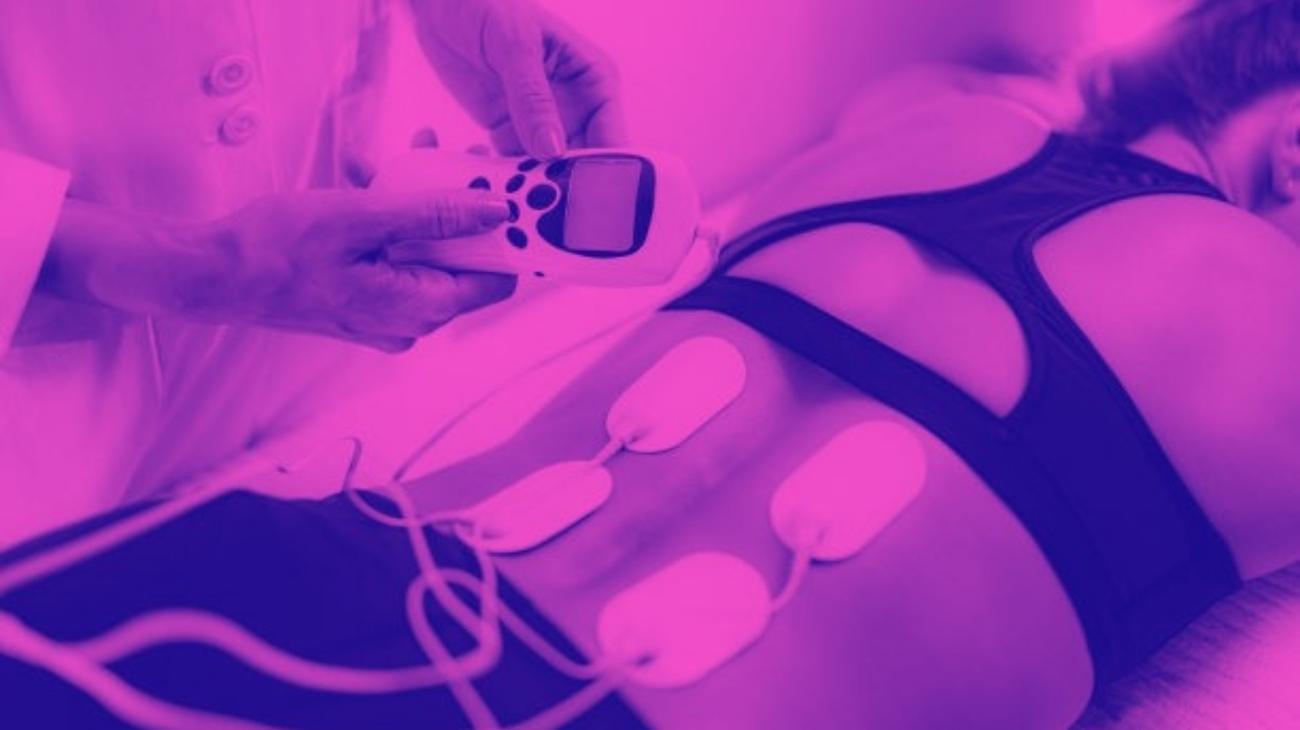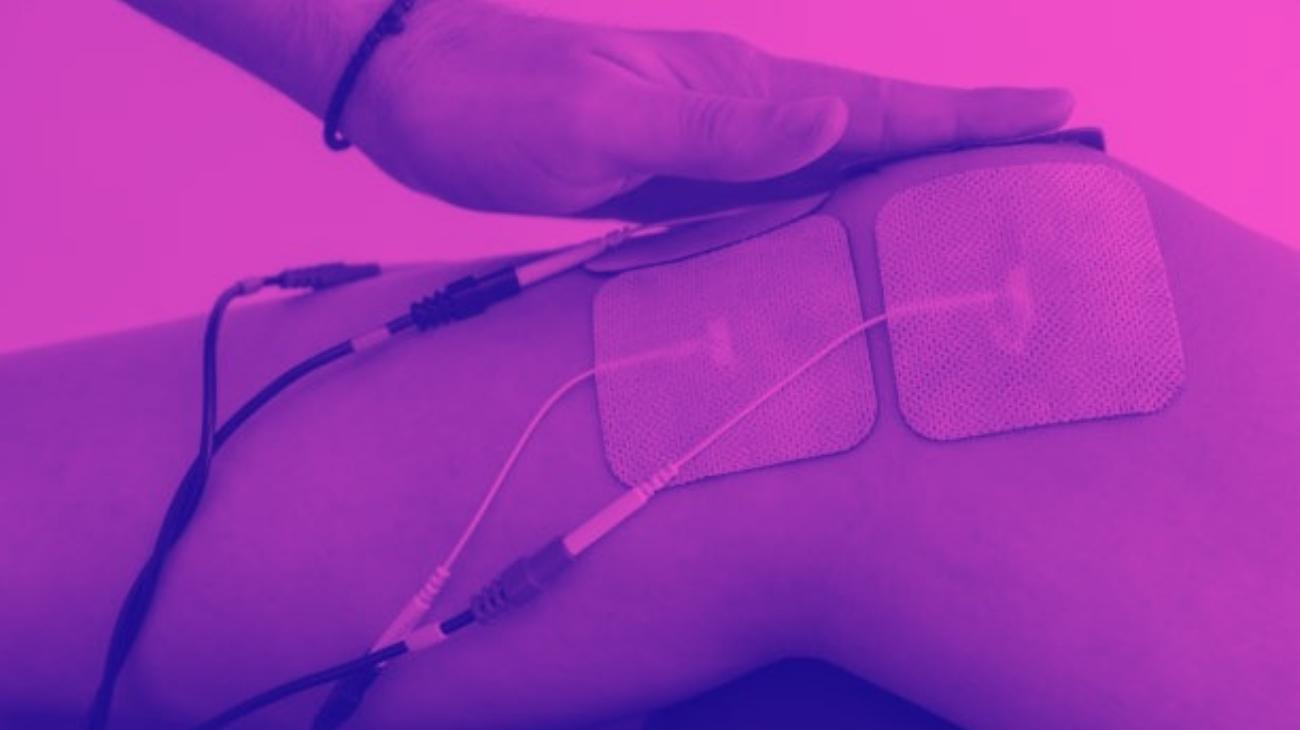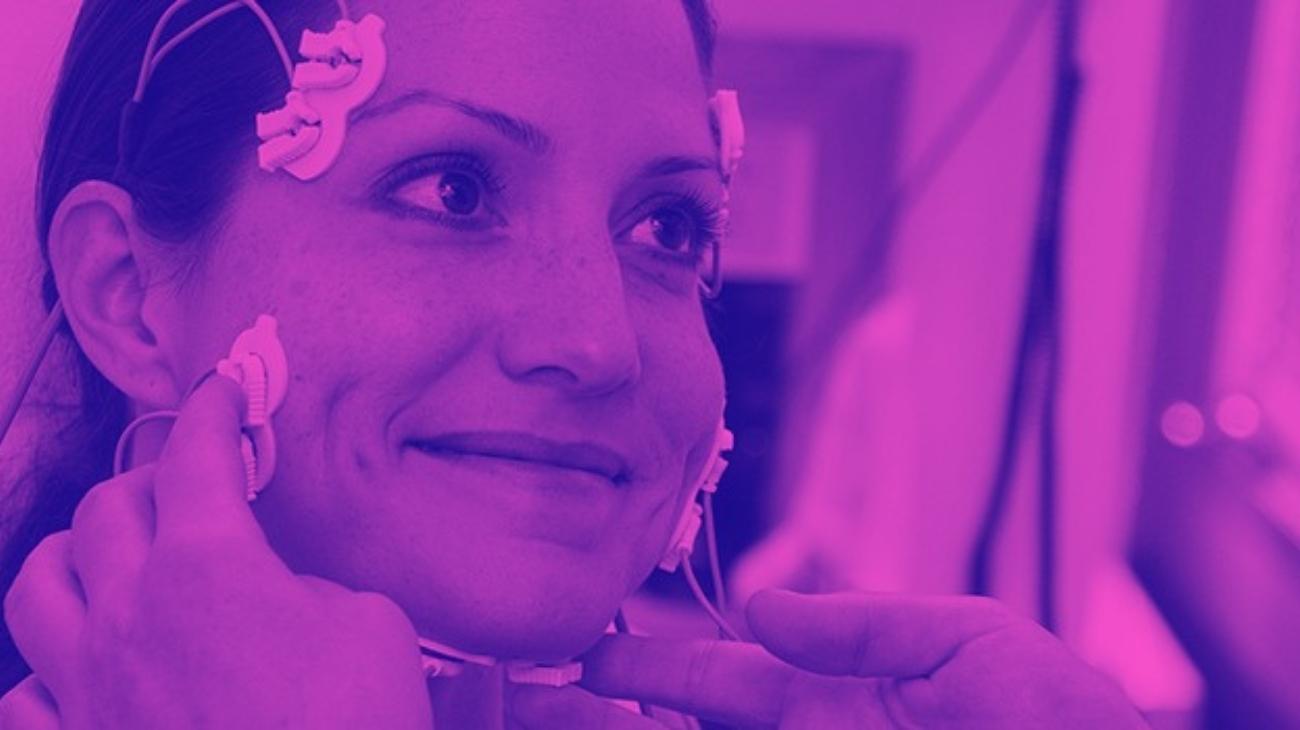- How to use TENS machines to relieve bursitis pain?
- Best TENS units to treat bursal inflammation
- How to use EMS electrostimulators to strengthen muscles and prevent bursitis?
- Best EMS machines to prevent synovial bursa inflammation
- Video: How to place electrodes pads for bursitis?
- More types of EMS electrostimulators and TENS machines you should know about
- What is bursitis and what are the causes?
- What are the most common types of bursitis?
- Differences between TENS and EMS: Which is better for treating bursitis?
- Contraindications to the use of electrodes and electrotherapy
The human body has a specialized design that allows it to have a fairly wide mobility, which can be increased with the appropriate exercises. For this purpose, the joints possess a certain cushioning property provided by certain membranes, which are called synovial bursae. However, these membranes can become damaged causing a condition known as bursitis.
This condition can lead to a series of symptoms that can be disabling, requiring a series of treatments to deal with both the disease itself and the ailments it causes. For the latter, one of the best options is electrotherapy in its TENS and EMS modalities, and below, we will show you how to apply these physiotherapy techniques for the relief of bursitis symptoms.
How to use TENS machines to relieve bursitis pain?
TENS electrotherapy is one of the most effective methods for treating the most painful symptoms of bursitis, so learning how to apply it correctly is crucial to be able to run an effective TENS session.
Below, we will teach you the correct positioning for the TENS electrode pads, and how to set up the TENS unit to apply the therapy correctly.
Where to place the electrodes?
The optimal positioning of the pads for bursitis treatment will depend largely on the type of ailment and the area affected. So the ideal locations can be summarized in the following list.
- Shoulder: over the trapezius muscle and the deltoids, to maximize the interaction of the impulses with the circumflex and supraclavicular nerve.
- Elbow: in this area, the electrodes are placed on the medial head of the triceps brachii and the anterior brachialis muscle, allowing a direct effect on the ulnar nerve.
- Hip: on the tensor fascia lata muscle, in position to interact with the obturator and lesser abdominogenital nerves.
- Wrist: the electrodes will be positioned over the anterior brachial muscle and the palmaris minor, exerting their effect on the extension of the median nerve.
- Knee: bursitis ailments can be treated by positioning the electrodes over the rectus femoris and tibialis anterior muscles, to interact with the vastus medialis nerve.
Which current to use?
The level of pain that can be caused by bursitis can be highly variable, so the intensity should be adjusted to the level of pain and the type of ailment present in the joint. This adjustment is mainly due to the difference between acute bursitis and chronic bursitis.
Bursitis responds better to higher frequencies, in the range of 90 and 120 Hz, which leads to a faster release of endorphins and a more aggressive interaction with the nerve endings in the affected regions, thus providing a sense of relief for the patient that makes the treatment of the disorder more tolerant.
On the other hand, chronic bursitis requires a much lower frequency and for longer periods of time. The ideal frequency ranges from 2 to 10 Hz, and is applied for periods long enough to stimulate a more controlled release of endorphins and to ensure that the nerve endings are not overstimulated. This promotes a sense of relief in chronic patients that can last for hours after the session.
Best TENS units to treat bursal inflammation
The effectiveness of TENS electrotherapy for the treatment of ailments associated with bursitis is so high that it is possible to purchase a wide variety of equipment with different configurations that can relieve the painful symptoms of this disorder. Among the most effective TENS units for this purpose, we can highlight the following:
- Type: Combo
- Channels: Dual
- Modes/Programs: 14 Modes
- Intensity: 25 Levels
- Wireless: Yes
- Heat Therapy: No
- Battery: Rechargeable Lithium
- Electrodes: 6 Pads
- Display: Digital
- Size: Not specified
- Portable and small size
- Includes carrying bag
- Rechargeable battery
- Includes user manual
- Accelerates recovery from sports injuries
- Does not specify measurements and weight
- Battery life not specified
- Does not include touch screen
The compact size of the device makes it incredibly practical and easy to carry, so you can use it anywhere you like quickly and discreetly. It is FDA approved, so it is completely safe to use, and its LCD screen gives you a full display of all settings so you can easily adjust your requirements.
- Type: TENS
- Channels: Dual
- Modes/Programs: 24 Modes
- Intensity: 20 Levels
- Wireless: Yes
- Heat Therapy: No
- Battery: Rechargeable Lithium (up to 20 hours)
- Electrodes: 10 Pads
- Display: Touch
- Size: 5.12" x 2.56" x 0.39" - 0.35 lbs
- Portable and small size
- Includes carrying bag
- Long battery life (up to 20 hours)
- Accelerates recovery from sports injuries
- Reduces pain symptoms
- Not for muscle hypertrophy
- Does not include user manual
- No heat therapy
It has 24 modes of use and 20 intensity levels that can be applied in isolation to each of the device's channels thanks to its dual channel function, allowing different therapies to be applied to separate areas of the body. In addition, it has a session timer mode and automatic shut-off that will allow you to give greater efficiency to your sessions and make better use of the energy of its high-capacity lithium battery.
- Type: TENS
- Channels: 4
- Modes: 24 Programs
- Intensity: Not specified
- Wireless: No
- Heat therapy: No
- Battery: Rechargeable
- Electrodes: 8 Pads
- Display: LCD
- Size: Not specified
- 4 independent channels
- Provides cramp relief
- Portable Device
- Promotes tissue healing
- 24 programs
- Few electrodes
- Does not specify battery life
- Does not specify intensity and size
It has 24 clinically proven massage programs, which are divided into 12 TENS therapy programs and 12 muscle stimulation training modes. It has a long-life rechargeable lithium battery that will give you a great autonomy of several hours of continuous use, eliminating the extra cost of buying replacement cylindrical batteries.
- Type: TENS
- Channels: 4
- Modes: 24 Modes
- Intensity: 20 Levels
- Wireless: No
- Heat therapy: No
- Battery: Rechargeable (10 hours of use)
- Electrodes: 24 Pads
- Display: Digital
- Size: Not specified
- 4 outputs with 2 separate channel configurations
- Includes 24 different pads
- Rechargeable battery
- Large display
- 24 massage modes with 20 intensity levels
- No adapter for non-US plugs
- No size specified
It has an incredibly portable size that will allow you to take it anywhere, and a high-powered rechargeable battery that will give you up to 20 hours of continuous use. It can be connected to AC power through its AC adapter, or to an external battery or laptop through its USB charging port.
- Type: TENS
- Channels: 2
- Modes/Programs: 6 Programs
- Intensity: Not specified
- Wireless: No
- Heat Therapy: No
- Battery: Rechargeable Lithium (up to 20 hours)
- Electrodes: 8 electrodes
- Display: Digital
- Size: Not specified
- Includes user manual
- Accelerates recovery from sports injuries
- Portable and small size
- Long battery life (up to 20 hours)
- Includes carrying bag
- No intensity levels specified
- No heat therapy
- Does not specify dimensions and weight
It has 6 modes of use that emulate different types of massages to achieve different objectives, along with 10 levels of intensity that provides greater effectiveness. The package includes 1 control, 2 large electrodes, 2 small electrodes, 2 guide cables, 1 user's manual, 1 cable case and 1 treatment guide.
How to use EMS electrostimulators to strengthen muscles and prevent bursitis?
Although the shocks applied by EMS devices are not effective in treating the symptoms of bursitis, their use can be quite helpful in strengthening the muscles of the joints.
To this end, we will show you below the most effective electrode positioning, along with the proper configuration for muscle training.
Where to place the electrodes?
To obtain the best results in the prevention of bursitis, muscle strengthening of the joints is crucial, since it allows to reduce to a certain extent the direct stress on the synovial bursae, preventing their inflammation. For this purpose, the correct locations of the electrodes are as follows.
- Shoulders: the trapezius muscle, the anterior, lateral and posterior deltoids, and the infraspinatus muscle.
- Elbows: in this case, the electrodes are placed on the biceps brachii, the anterior brachialis muscle and the biceps brachii muscle.
- Wrist: the ideal positions are the brachioradialis muscle and the deep flexor.
- Knees: in the case of the knees, the electrodes will be positioned on the vastus medialis, rectus femoris and tibialis anterior muscle.
- Hip: tensor fascia lata, gluteus maximus muscle and gluteus medius muscle
What intensity to use?
The best way to achieve a progressive development in the strength of the muscle groups that are responsible for stabilizing the joints is through the application of a medium intensity electric current that activates the muscles without putting stress on the joints themselves.
To achieve this, the ideal frequency ranges between 65 and 85 Hz in periods of between 40 and 70 minutes, with the variables established by the specialist to ensure that the joints receive less stress when they are being used, thus preventing injuries and joint diseases.
Best EMS machines to prevent synovial bursa inflammation
The use of EMS training therapy for muscles can bring a number of indirect benefits for the prevention of disorders such as bursitis, thanks to the reinforcement of muscle support of the joints. For this purpose, we can make use of the following models of EMS devices:
- Type: Combo
- Channels: Dual
- Modes/Programs: 24 Modes
- Intensity: Not specified
- Wireless: Yes
- Heat Therapy: No
- Battery: Rechargeable Lithium (up to 20 hours)
- Electrodes: 8 Pads
- Display: Touch
- Size: Not specified
- Includes user manual
- Long battery life (up to 20 hours)
- Portable and small size
- TENS+EMS Combo
- Reduces pain symptoms
- Does not specify intensity levels
- Does not specify measurements and weight
- Does not include carrying bag
It includes 24 massage programs in total, which are designed to treat a wide variety of ailments. Each of the modes has 4 different options to choose from, and comes with all the accessories you may need, from electrodes and guide wires to a user guide and an electrode positioning guide.
- Type: Combo
- Channels: Dual
- Modes/Programs: 12 Modes
- Intensity: 30 Levels
- Wireless: Yes
- Heat Therapy: No
- Battery: Batteries
- Electrodes: 16 Pads
- Display: Digital
- Size: Not specified
- Includes carrying bag
- Improves blood circulation
- Portable and small size
- Improves joint mobility
- TENS+EMS Combo
- No battery type specified
- No heat therapy
- Does not specify size and weight
It offers a professional solution through its 12 massage modalities with 30 intensity levels, which you can easily adjust to adapt the therapy to your needs. Additionally, its dual channel function allows you to apply different modalities on the A and B channels of the stimulator, allowing you to treat two different areas of the body, or even two different people, simultaneously.
- Type: Combo
- Channels: 4
- Modes: 4 Programs
- Intensity: Not specified
- Wireless: No
- Heat therapy: No
- Battery: 3 AA
- Electrodes: 8 Pads
- Display: LCD
- Size: 6.25 x 2.25 x 0.80 inches
- Offers relief from cramps
- TENS + EMS
- Portable Device
- Easy to use
- Includes carrying bag
- Few modes/programs
- No rechargeable battery
- No intensity specified
It has a versatile 4-channel function that allows you to apply individual massage programs to different areas of the body simultaneously, includes 4 modes of professional massage therapy, divided into TENS, EMS, Rehabilitation and Fitness, making it the ideal complement to maximize the results of your workouts.
- Type: Combo
- Channels: 4
- Modes/Programs: 6 Programs
- Intensity: Not specified
- Wireless: No
- Heat Therapy: No
- Battery: Rechargeable
- Electrodes: 12 electrodes
- Display: Digital
- Size: 5.38" x 3.75" x 1"
- Improves blood circulation
- Prevents muscle atrophy
- Rechargeable battery
- Good quality
- Reduces pain symptoms
- Does not specify intensity levels
- No heat therapy
- No weight specified
It also has 5 programs of use focused on different branches of physical conditioning: endurance, resistance, strength, active recovery and warm-up. Proper use of this device will allow you to reach your maximum performance with very little cardiovascular fatigue, and is highly recommended for fitness enthusiasts who frequently engage in competitions.
- Type: Combo
- Channels: -
- Modes/Programs: 15 Programs
- Intensity: Not specified
- Wireless: Yes
- Heat Therapy: No
- Battery: Rechargeable Lithium
- Electrodes: 4 Pads
- Display: No display
- Size: Not specified
- TENS+EMS Combo
- Control from mobile app
- Reduces pain symptoms
- Includes user manual
- Rechargeable battery
- Does not specify dimensions and weight
- Battery life not specified
- Does not specify intensity levels
With more than 400 modes of use and a variety of intensity levels, the PowerDot 2.0 is one of the most complete electro stimulators available, as its functions focus on muscle recovery, improved physical performance, and pain relief. All these features make it the leading choice for the immediate treatment of any pain, whether caused by injury or illness.
Video: How to place electrodes pads for bursitis?
Electrodes for shoulder
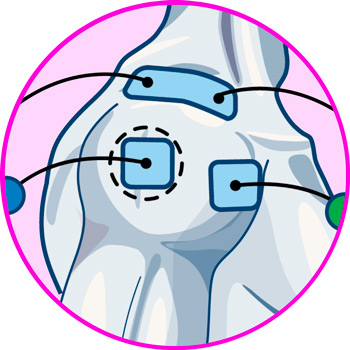
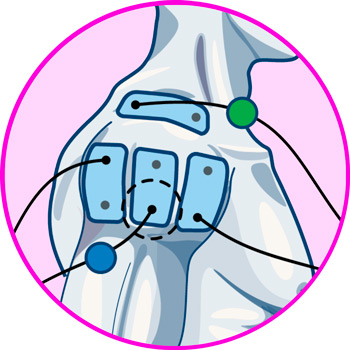

Electrodes for elbow
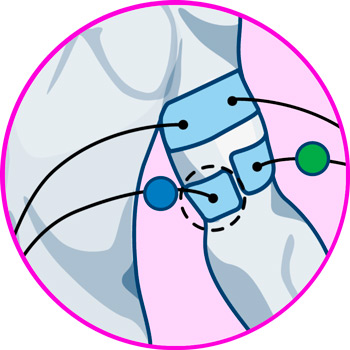

Electrodes for wrist
Electrodes for knee
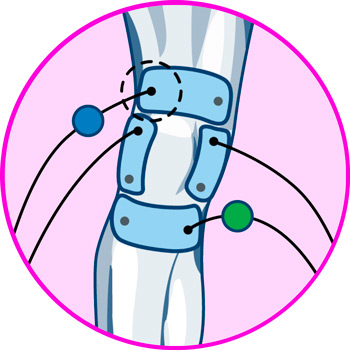

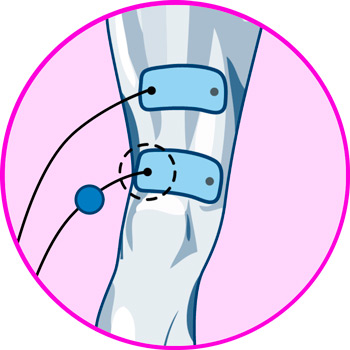
Electrodes for ankle
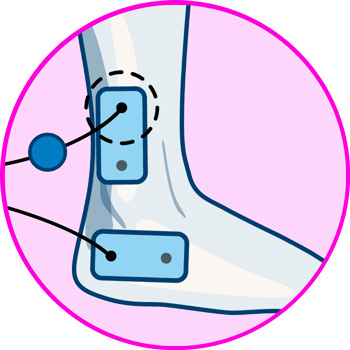

More types of EMS electrostimulators and TENS machines you should know about
What is bursitis and what are the causes?
It is a particularly painful disorder that consists of inflammation of the synovial bursae, which are small fluid-filled sacs that provide cushioning to the joints at the bone and muscle level. It is a very common ailment in areas such as the shoulder, elbow and hip, although the knee is also particularly vulnerable, as is the base of the big toe.
There is a considerable list of causes for bursitis, among which we can highlight the following:
- Previous diseases such as arthritis or gout.
- Repetitive movements that put stress on the joint.
- Excessive pressure on the joints for long periods of time.
- Injuries and trauma to the joint.
- Different types of infections can affect the joints and lead to cases of bursitis.
In addition to the direct causes, there are certain risk factors that play an important role in the likelihood of developing bursitis. Among these, we can highlight the following:
- Age: people over 45 years old have a higher risk of suffering bursitis.
- Works or hobbies: especially those that require repetitive and demanding movements in elbows and knees.
- Medical history: since certain disorders such as diabetes may increase the risk of developing bursitis.
What are the most common types of bursitis?
There are two main ways in which bursitis can be classified. The first is governed by the length of time the condition lasts, while the second is based on its location.
In the first classification we can find:
- Acute bursitis, where pain and inflammation manifest suddenly and abruptly. This classification lasts for a maximum period of three weeks.
- Chronic bursitis, in which the pain has persisted for a period of more than three weeks.
The second classification, for its part, is organized as follows:
- Shoulder
- Hip
- Knee
- Elbow
- Wrist
Differences between TENS and EMS: Which is better for treating bursitis?
One of the most prominent symptoms of bursitis is the pain it can cause in the patient's joints. This is one of the first problems that must be addressed when dealing with this disease. For this, one of the best options is electrotherapy, however, it is necessary to take into account the distinctions between TENS and EMS therapy in order to be able to obtain the desired effects.
Transcutaneous Electrical Nerve Stimulation, or TENS for its initials in English, is a physiotherapy technique focused on the relief of ailments, which can be identified by the following characteristics:
- Interacts directly with the nerve endings of the affected area.
- It applies low intensity electrical currents, in the range of 1 to 250 Hz.
- It is a therapy for the treatment of symptoms, so it does not replace the treatment for the disorder that causes the symptoms.
- Its usefulness for the treatment of bursitis lies in its ability to numb the nerves that cause the sensation of pain in the joint.
EMS, or Electro Muscle Stimulation, is a physical training method aimed at improving muscle condition, distinguishable by the following properties:
- It applies electrical impulses with varying intensity between 70 and 150 Hz.
- It focuses on physical conditioning through muscle contractions.
- It is a widely applied method for muscular rehabilitation in highly competitive sports.
- It is not a treatment for painful injuries.
With this said, the best option for the relief of pain caused by bursitis in any of its forms is Transcutaneous Electrical Nerve Stimulation. Thanks to its direct effect on the nociceptors in the nerve branches of the different joints, which blocks the pain impulses preventing them from reaching the brain, thus numbing the sensation for the patient, generating relief of variable duration.
On the other hand, EMS is not a recommended therapy for the treatment of bursitis, because its electrical discharges are designed to interact with muscle tissue. This effect is foreign to the internal structure of the joints, so muscle contractions will not have a favorable effect in relieving pain caused by bursitis.











